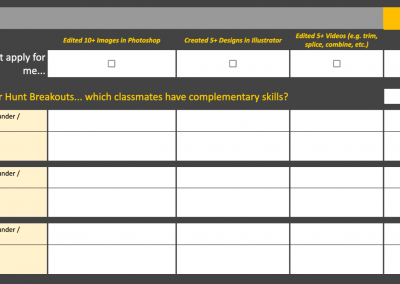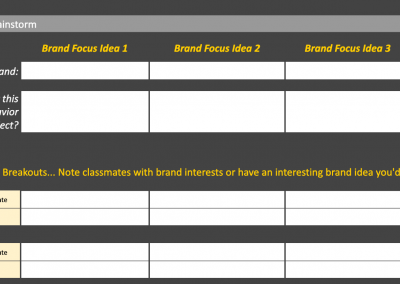“Group projects make me understand why Batman works alone.” – Anonymous
It’s no secret that students are often less than enthused about working with their classmates. We’ve all heard the horror stories: the group member that never shows up, the domineering leader, or fights over who did what. As a CETLOE Learning Experience Designer, I’ve often heard instructors question if group projects are worth the hassle.
But as much as students may complain, collaboration is an essential professional skill. Group work gives students a chance to practice communication and conflict resolution in a supportive learning environment. We’ve found that working in groups in an online course increases learner-to-learner social presence, leading to greater trust and satisfaction among your students. Group projects are an opportunity to implement authentic learning tasks into the classroom. And finally, group projects can reduce grading load and deter cheating.
As you design and create group projects for your course, consider the following questions:
How can I help my students form balanced groups?
We know that group selection can be a tricky process. If you let students pick their groups, they’ll stick with their friends and limit their exposure to new viewpoints. However, randomly assigning groups can create tension if students do not share project goals or have incompatible skill sets.
Jennifer Daniels, instructor for Marketing for Entrepreneurs, utilizes a group selection approach originally designed by TeachingEntrepreneurship.Org, her curriculum partner. Her scavenger hunt activity facilitates a robust experience for students to choose their team members based on aligned goals and diverse skills needed for the projects.
In a synchronous online session, students spend a few minutes filling out a questionnaire assessing their project interests, goals, and how they rate themselves across several relevant skillsets. The student must also share the minimum grade they are comfortable earning in the class.
After filling out this questionnaire, students move into small breakout rooms, share their self-assessments, and find students that complement their strengths and goals. (We’ve adapted this activity into a discussion board for other classes in asynchronous formats.)
-

Students can rate their skills in graphics, technology, social media, design, sales, and marketing for a Marketing for Entrepreneurs group project.
-

The scavenger hunt can be easily adapted to align with the unique student goals and skills for any type of project. Here, students indicate their interest in a particular brand for a Consumer Behavior group assignment.
How can I encourage collaboration and help students resolve conflicts?
Now that the students have formed their groups, it’s time to establish some ground rules. We recommend asking each group to create a charter that lays out their approach to teamwork. In this charter, the group should specify how they’ll communicate, meet, resolve conflict, and proceed if a group member does not participate. If it’s appropriate to the project, you can ask students to assign themselves specific roles, such as Note Taker, Researcher, or Editor.
Of course, conflicts will inevitably arise. When a team comes to you with a problem, you can encourage students to look to their charter for guidance.
We also recommend asking students to provide frequent updates on their project status, especially if the project is a summative assessment. You can set up discussion boards restricted to each group in iCollege to host these updates. These updates can give you a peek into the students’ work process and allow you to intervene if anything seems amiss.
How can I grade equitably?
Instead of assigning all group members the same grade, include an individual component in the final assignment. For example, each student can write a short reflective essay describing how they contributed to the project. You can also incorporate group- and self-evaluations into the assignment. Whatever methods you choose, provide students with a rubric and work examples before the project’s due date.
“If you take out the team in teamwork, it’s just work. Now who wants that?” ― Matthew Woodring Stover
Although students may roll their eyes at the prospect of a group project, remember that collaboration is an essential part of almost every profession. Working in groups — even dysfunctional ones — is an opportunity to practice real-world communication and planning skills. Here at CETLOE, we’ll help you step away from the cheesy motivational posters and give your students the foundation they need to lead and succeed.
 Victoria Patterson is a Learning Experience Designer at CETLOE. She is still searching for the perfect lasagna recipe.
Victoria Patterson is a Learning Experience Designer at CETLOE. She is still searching for the perfect lasagna recipe.

